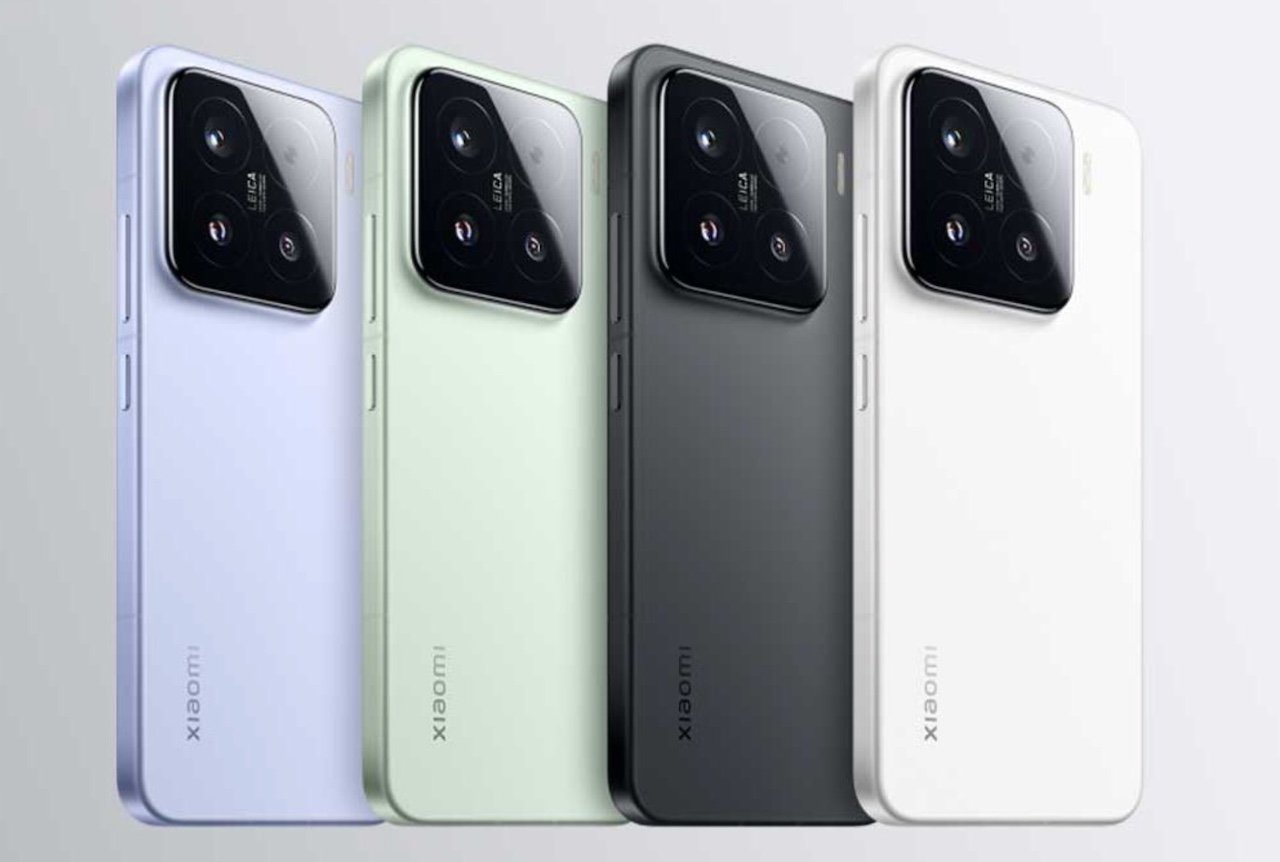The Xiaomi 15 launched on October 29, 2024, and is unarguably better than the Xiaomi 14. However, the difference is minimal in screen brightness, camera quality, and performance. If you already have the Xiaomi 14, the changes may not feel worth upgrading.
But the Snapdragon 8 Elite chip is something to look forward to if you want a performance boost from before or you’re switching from a different brand. Let’s break down what’s changed and what hasn’t before you make a choice between them.
Specs Overview: Xiaomi 15 Vs Xiaomi 14
| Images: |   |
  |
|---|---|---|
| Component | Xiaomi 14 | Xiaomi 15 |
| Processor | Qualcomm Snapdragon 8 Gen 3 (4 nm) | Qualcomm Snapdragon 8 Elite (3 nm) |
| RAM | 8 GB / 12 GB / 16 GB | 12 GB / 16 GB |
| Storage | 256 GB / 512 GB / 1 TB (No card slot) | 256 GB / 512 GB / 1 TB (No card slot) |
| Display | 6.36 inches, 1200 x 2670 pixels, LTPO OLED, 120Hz, HDR10+, Dolby Vision | 6.36 inches, 1200 x 2670 pixels, LTPO OLED, 120Hz, HDR10+, Dolby Vision |
| Main Cameras | 50 MP (wide), 50 MP (telephoto, 3.2x optical zoom), 50 MP (ultrawide) | 50 MP (wide), 50 MP (telephoto, 3x optical zoom), 50 MP (ultrawide) |
| Selfie Camera | 32 MP (wide), 4K video | 32 MP (wide), 4K video |
| Battery | 4610 mAh, 90W wired, 50W wireless, 10W reverse wireless | 5400 mAh, 90W wired, 50W wireless, 10W reverse wireless |
| Connectivity | Wi-Fi 802.11 a/b/g/n/ac/6e, Bluetooth 5.3, USB Type-C, OTG | Wi-Fi 802.11 a/b/g/n/ac/6e/7, Bluetooth 5.4, USB Type-C 3.2, OTG, NFC, Infrared |
| Price | $191.86 / €709.00 / £685.00 / ₹49,999 | €590 (around) |
Design
The Xiaomi 15 and Xiaomi 14 both have high-quality designs, but the Xiaomi 15 is slightly thicker with a weight range between 189g and 192g. It retains the same look as its predecessor, which has a square camera module on the back with three 50 MP lenses.
On the right side, you’ll find the volume rocker and the power button. At the front is, of course, the display, which houses the ultrasonic fingerprint scanner. It’s now better, except that, according to Gizmochina, you’ll have problems with regular tempered glass screen protectors. They block the sensor’s ability to read your fingerprint, as ultrasonic sensors use sound waves to scan your finger. Tempered glass interferes with those sound waves.
You’ll want to get a TPU film. For obvious reasons, TPU looks and feels cheap, but it has less durability, which is a major tradeoff. You could keep your phone naked, but that means you’re just one accidental drop away from a cracked screen.
There are no physical buttons on the left side of the Xiaomi 15. The bottom edge is where you’ll find the USB Type-C port for charging and data transfer, along with a single speaker grille. It doesn’t have a 3.5mm headphone jack, which most flagships do without nowadays.
Frankly, what’s really changed about the Xiaomi 15 is how it feels when you hold it. It’s something you’d understand when you get your hands on it. The material is more slippery, and that’s something to be careful of. Xiaomi calls it a “glass material with a velvet-like sandblasting”.
Display
Although both phones use an OLED screen with a 120Hz refresh rate, the Xiaomi 15 has a better display than the Xiaomi 14. Brightness is now at 3,200 nits, whereas the previous model peaked at 3,000 nits. The Xiaomi 15 also shows more colors, with 1 billion colors compared to the 68 billion on the Xiaomi 14, so it’s better in color accuracy.
The phone has thinner bezels, which is more attractive in my book as you have more screen area to work with. For protection, the phone uses shatterproof glass, while the Xiaomi 14 uses Gorilla Glass Victus.
It’s unclear which display is stronger, as Xiaomi doesn’t specify the type of glass used, and no drop tests have been conducted yet. But we’ll find out soon. Overall, the Xiaomi 15 has a brighter and more colorful display.
Performance
It’s clear that the Xiaomi 15 is the better performer, thanks to all the leaks and rumors about the Snapdragon 8 Elite before the phone arrived. The faster CPU, better GPU, and more efficient 3 nanometer process make it a stronger choice than the Snapdragon 8 Gen 3 on the Xiaomi 14.
Qualcomm announced the processor at the Snapdragon Summit 2024, and one of its biggest upgrades is for gaming. The chipset’s Adreno 830 GPU is 40% faster, and the Oryon CPU delivers lag-free gameplay even with complex scenes and high graphics detail.
The cores can reach up to 4.32GHz, completing over four billion operations every second. The Snapdragon 8 Gen 3 clocks in at around 3.3GHz, which takes roughly 1.3 times as long to complete the same tasks as the Snapdragon 8 Elite.
The newer processor also brings a desktop-like experience to mobile web browsing, where you can handle media-heavy versions of websites with ease. On top of that, the Elite’s AI engine is stronger and 45% faster than the 8 Gen 3’s.
In camera, it supports 8K HDR video at 60 FPS and photos up to 320MP. The 8 Gen 3 still performs well but maxes out at 200MP photos and 8K video at 30 FPS.
Memory & battery
The Xiaomi 15 has better RAM and storage options compared to the Xiaomi 14. The Xiaomi 15 starts with 12GB of RAM, and can handle more apps at once, while the Xiaomi 14 starts with 8GB. Both phones have similar storage choices: 256GB, 512GB, and 1TB.
But, because the Xiaomi 15 offers 12GB and 16GB RAM with higher storage options like 512GB, it’s better for multitasking. The Xiaomi 14, with its 8GB RAM, might struggle more in comparison. Both phones have UFS 4.0 storage, so they have fast speeds for reading and writing data.
As for the battery, the Xiaomi 15 has a slightly larger battery than the Xiaomi 14, with a 5400 mAh battery in contrast to the 4610 mAh. The Xiaomi 15’s battery lasts longer, as it works in combination with the Snapdragon 8 Elite chip to consume 2% less power after 20 minutes of gaming.
Nothing has changed in charging speed. The two phones offer 90W wired charging, 50W wireless charging, and 10W reverse wireless charging. However, the Xiaomi 15 now has a cold endurance mode in its battery settings. It enabled the phone to use less power in cold weather, so that the battery lasts longer.
Camera
The Xiaomi 15’s camera setup is better than the Xiaomi 14 because of a few adjustments and AI assistance thanks to the Snapdragon 8 Elite. Both phones carry a 50 MP, f/1.6, 23mm wide camera with dual-pixel Phase-detection Autofocus (PDAF) and Optical Image Stabilization (OIS), and a 50 MP, f/2.2, 14mm ultrawide lens.
While the design and arrangement are the same, the Xiaomi 14 has a better telephoto sensor because of the longer focal length. That is 75mm over 60mm on the Xiaomi 15, giving it a greater zoom range at the same optical zoom level.
But the Xiaomi 15 also fixes color problems with reds that were too bright on the Xiaomi 14 to make colors look more natural. The white balance is also improved. For video, the Xiaomi 15 can record 4K HDR videos with the front camera. But there’s a purple-fringe problem that wasn’t present on the Xiaomi 14, first spotted by Gizmochina.
It happens when you take photos or videos with bright lights. You’ll see a purple or pinkish color around the light source. It’s harder to fix while recording, although with photos, you can make adjustments later.
Software & features
The Xiaomi 15 uses HyperOS 2, while the Xiaomi 14 runs the first version. The newer operating system now has a lock screen with movie-like animations powered by AI and dynamic wallpapers that change based on your liking. The home screen offers more widgets and smoother animations.
A new feature lets you copy something on one device and paste it on another. Cross-device video recording is also supported. The AI features include Magic Painting, which lets you turn sketches into detailed images, and Voice Recognition, which converts speech into text and summarizes it.
Writing Tools helps you to generate text, fix mistakes, and improve writing quality. Meanwhile, Translation gives you real-time subtitles for calls, meetings, and videos. Anti-Fraud detects fake calls and face-swapping videos, but these are just a few of the features you’ll experience on the OS.
Which Xiaomi phone suits you?
If you’re considering upgrading from the Xiaomi 14, weigh the improvements we’ve discussed seriously. Should they matter to you, the Xiaomi 15 could be worth it. Also, if you’ve never used a Xiaomi phone, it’s a great device to start with since you’re unfamiliar with its interface, hardware, and other factors. If not, sticking with the Xiaomi 14 is the better choice.





















